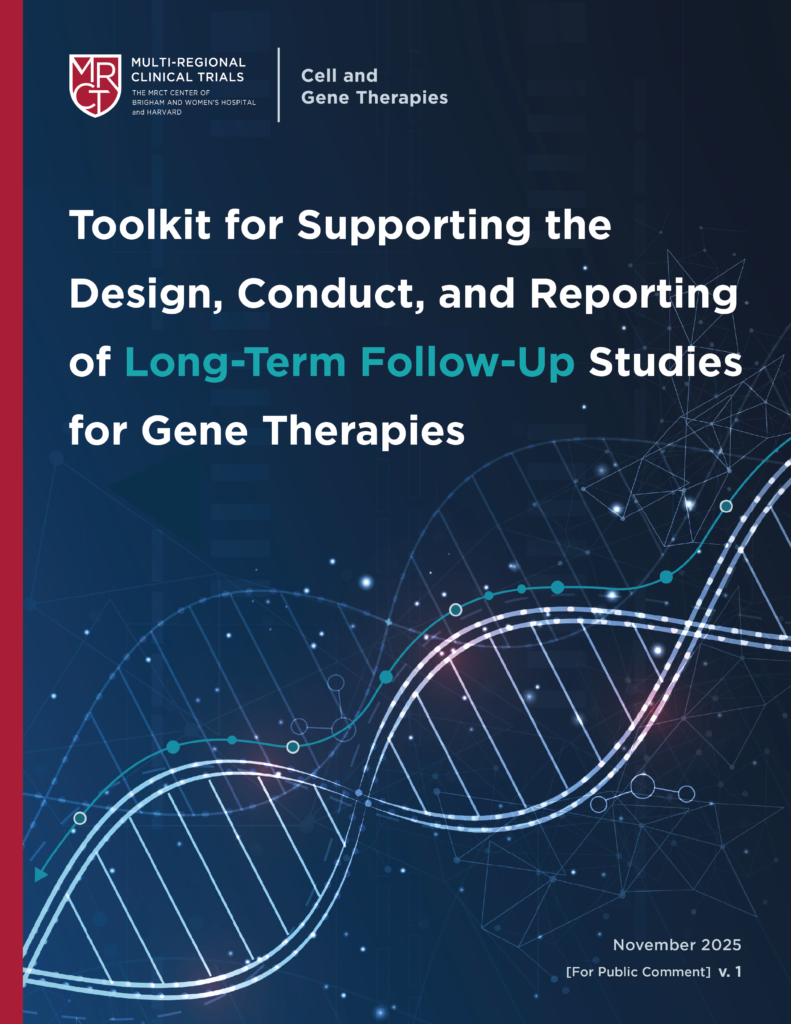Toolkit

Released on: November 4, 2025
Long-term follow-up (LTFU) studies of gene therapy recipients are crucial for understanding the overall benefit-risk profile of these innovative products. However, LTFU studies are challenging to design, conduct, and execute, and pose significant burdens on both patients and sponsors.
In September 2024, the MRCT Center launched an LTFU Working Group. The committee comprises patients, as well as representatives from patient advocacy organizations, industry sponsors, academic medical centers, clinical research organizations, and human oversight protection organizations, each bringing diverse perspectives and complementary scientific, medical, regulatory, and ethical expertise.
On November 4, 2025, the MRCT Center released the Toolkit for Supporting the Design, Conduct, and Reporting of Long-Term Follow-Up Studies, as a draft for public comment. The Toolkit provides practical guidance regarding best practices for LTFU studies for both investigational and approved gene therapies. It aims to balance the generation of critical long-term safety and efficacy data with the need to reduce burdens placed on participants, caregivers, sponsors, and investigators.
The Toolkit enables easy navigation to various sections and subsections via multiple clickable, interactive toolbars. The sections are as follows, with the core elements in bold font:
- Introduction and Background
- Types of LTFU studies for GTs
- Flowcharts
- Guiding Principles
- Considerations and Recommendations for the Design, Conduct, and Reporting of LTFU Studies for GTs
- Looking Forward
- Key Design Elements of LTFU Studies for FDA-approved GTs
- Regulatory Guidance Relating to LTFU of GTs
- Compiled Glossary of Scientific LTFU-Related Terminology
- Easy-to-Understand (Accessible) LTFU-Related Definitions from the MRCT Center’s Clinical Research Glossary
- Appendices
- List of Acronyms and Abbreviations Used
- References Cited
We welcome your suggestions and feedback on this Toolkit, which has been released as a draft for public comment. Please email us at mrct@bwh.harvard.edu with your comments and/or questions.
Navigation Highlights
The Toolkit incorporates several interactive features designed to support intuitive navigation and ease of use:
- Clickable Table of Contents for rapid access to major sections and subsections.
- Right-hand vertical navigation bar on every page, enabling quick movement between tools within the document.
- Interactive table of LTFU study types, mirrored by color-coded tabs that remain clickable throughout the associated pages.
- Secondary navigation bar at the top of each page within the Considerations & Recommendations section. This feature highlights your location within the nine subsections, allows you to jump directly between subsections by clicking the dots, and includes a grey diamond icon that returns you to the full list of subsections.
